
Now that the Destined series is officially done (except for Chloe’s ongoing novella Stolen), I’m back in read-and-daydream mode as I get ready to start writing a new series. And oh man it feels so good!
I can’t share much about the new series yet, but here’s what I’ve got so far:
- The genre will most likely be Historical Fantasy inspired by Norse Mythology.
- Rather than telling the story of several different protagonists, it will follow a single protagonist over the course of the series, with a thread of slow-burn, sweet romance running through the books.
- Instead of writing and releasing one book at a time, I’m going to attempt to pre-write them and release them close together, perhaps 1-2 months apart. This will mean waiting longer to release the first book but a whole host of benefits that I think will make it worth the trade-off.
Over the next several weeks I’ll be doing the outline for the new series. In the meantime, I’ve been replenishing my creative well by reading broadly and deeply, plus watching lots of K dramas (obviously). 😉 In this post, I’m sharing a few of the nonfiction books I’m enjoying so far.
Ivory Vikings by Nancy Marie Brown
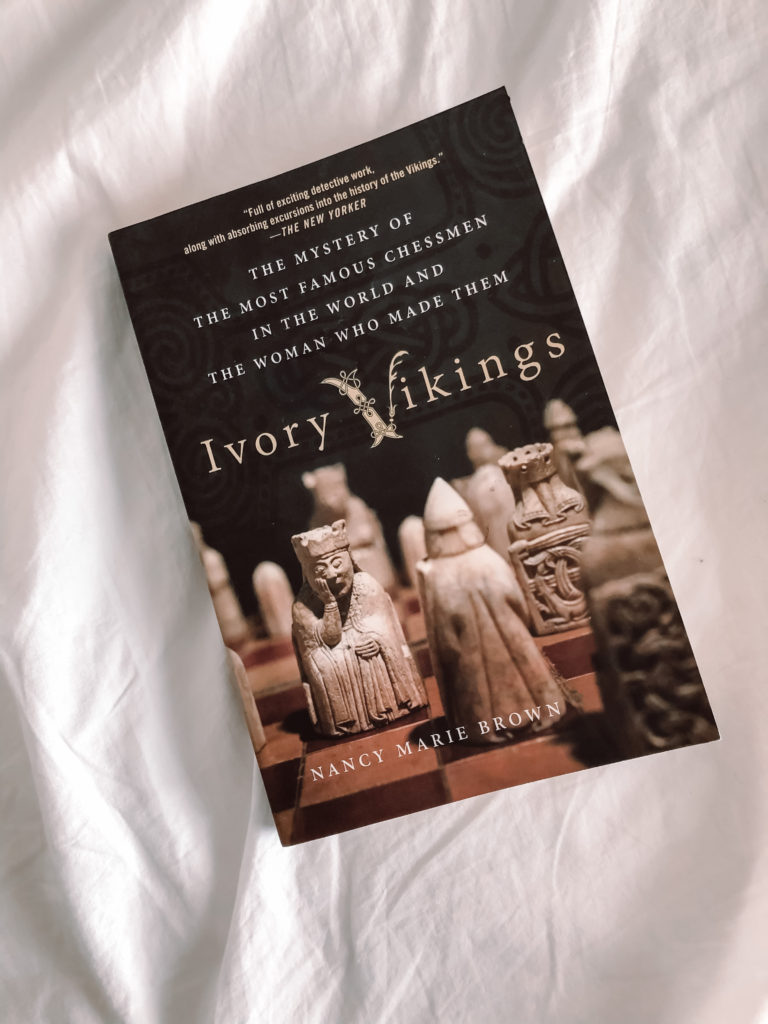
This is the story of famous ivory chess pieces from the Middle Ages. I haven’t actually gotten to much of that story yet but so far I am loving her storytelling. I especially appreciate her extensive use of primary sources, at turns hilarious and heartbreaking in their observations of the Vikings.
Here are a few of my favorite quotes from her book so far.
On walrus tusks:
The Vikings likely did not care why walruses had tusks, only that they did. Light and long-lasting, the teeth of these small whales – or big fish, for so they classified all whales – made the perfect cargo for a Viking ship. Viking raids were bankrolled with fish teeth. Viking trade routes were built on them. Viking explorers sailed west out of sight of land in search of shiny, white walrus tusks. From the eighth to the fourteenth century – well after the end of the Viking Age – walrus ivory was the most sought after commodity of the North. It was Arctic gold. (p.27)
On walrus hides:
Black and tough, one hide weighs from one to five hundred pounds. Split, cured, and twisted into rope, walrus hide made the best ships’ rigging; one bull supplied enough cordage for two to three large trading knarrs. It was the strongest rope known for its weight: A strand half an inch thick could lift a ton. … Other medieval seamen were saved from starvation by their walrus-hide rigging; dismasted in a storm, they lived for eighteen days on ropes smeared with butter. (p.27)
On the observations of Vikings by Ibn Fadlan in 922:
He himself journeyed north, to “a land which made us think a gate to the cold of hell had open opened before us.” Bundled up in all the clothing he brought, he is astonished that the Rus [Vikings] “wear neither coats nor caftans, but a garment which covers one side of the body and leaves one hand free.” He remarked on their weapons (axe, sword, and knife), their tall bodies (like palm trees), their coloring (fair and ruddy), their lack of hygiene (“They are the filthiest of all God’s creatures”), and their funeral rites, complete with blazing ships and willing human sacrifice, that are at least as much Turkic as Viking. (p.32)
On Viking violence:
A monk who witnessed the Viking siege of Paris in 885 described it as “a frenzy beyond compare.” The Vikings “ransacked and despoiled, massacred, and burned and ravaged,” he wrote in Latin hexameter verse. “They were an evil cohort, a deadly phalanx, a grim horde …. A thousand gave battle, stood shoulder-to-shoulder in the fight … all bare-armed and bare-backed …. With mocking laughter they banged their shields loud with open hands; their throats swelled and strained as they shouted out odious cries.” They had gone berserk. …
The terror in Paris twelve hundred years ago echoes off the page. The Saxons, on the contrary, are silent. They kept no annals of Charlemagne’s raids, wrote no verses, so far as we know, on the massacre of 4,500 unarmed men. So we deplore the brutality of the Vikings but not the atrocities of the Emperor of the West. …
The Vikings seemed more horrible to medieval chroniclers because they did not play by the rules. They did not have one king but many sea kings. A deal with one did not encumber all. (all quotes from p.40)
On Borg, a settlement discovered in far northern Norway that stood until 950:
The chieftain’s hall overlooked fine grazing lands and fertile fields where some barley was grown (at least enough for the beer). The area was densely populated. The harbor was well protected; the boathouses were huge. Fishing was Borg’s main industry – dried cod, or stockfish, was an important export already in the 700s. Light, nutritious, and lasting for up to six years without rotting, dried fish was the perfect food on Viking fish. (p.50)
The Secrets of Story by Matt Bird
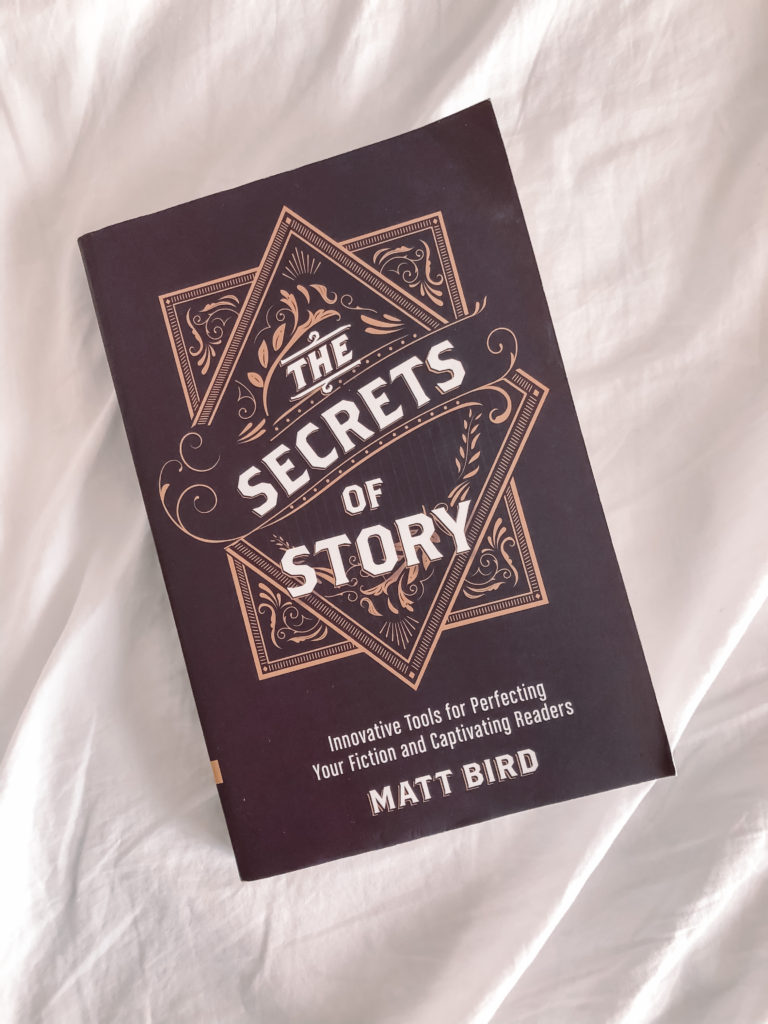
This incredible book has become my new favorite writing craft resource. It’s a bit overwhelming because its so exhaustive. Or maybe because I’ve highlighted 98% of it. Ha.
I think this is going to be one that I come back to again and again as I dig into the next series. A few gems:
On writing compelling characters:
In the same way that actions are only heroic if they’re hard to do, personality traits are only admirable if you have to go against the grain to act that way. (p.120)
You can’t become a hero by doing what anyone would do. You have to do that thing that you do. (p.127)
On subtext:
Subtext is an odd thing: It’s both the most naturalistic way to write and the most artificial, since the writer must put a lot of work into layering multiple levels of meaning within each scene, setting up and paying off complex x-equals-y algorithms. And yet the results, if done right, will seem totally organic. (p.181)
On dialogue:
Your goal should be to write dialogue with maximum personality and the minimum amount of clarity that you can get away with. The audience doesn’t want you to hold their hand. They’d rather catch up. They want you to play hard to get so they can have the thrill of the chase. (p.228-229)
On having an ironic thematic dilemma:
If a theme can be stated in terms of “This is good and that is bad,” then it won’t be ironic or interesting. If your story, however, is about a contest between goods or between evils, then you will create a gap between expectation (good should always be pursued; evil should always be evaded) and reality (some goods must be rejected in favor of others; some evils must be accepted to reject others). (p.267)
A Mind for Numbers by Barbara Oakley, PhD
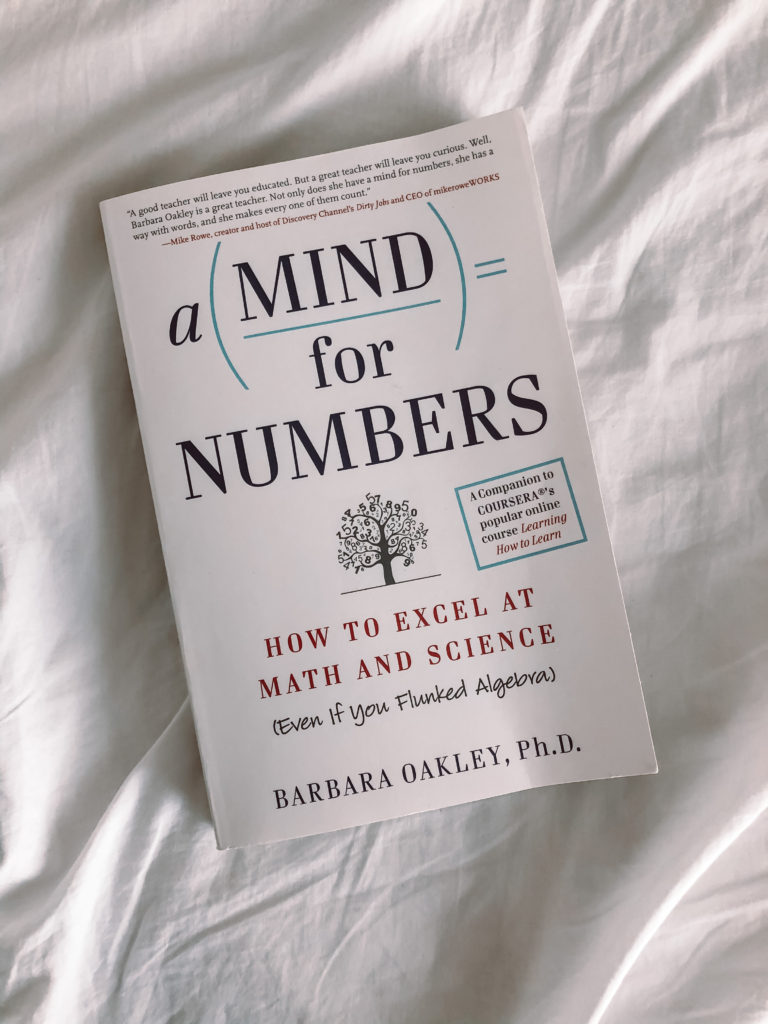
Fun fact, I actually loved math growing up. But I also like the idea of getting better at math, because my Achiever theme is never satisfied. 😂
The topic is unrelated to Vikings or writing but I think the idea of focus-mode and diffuse-mode thinking will be helpful as I get to work outlining and writing the next series. Problems with plot or “writer’s block” can seem insurmountable at times, but it often turns out I just need to step away and do something else for a while.
On focused-mode thinking:
It involves a direct approach to solving problems using rational, sequential, analytical approaches. The focused mode is associated with the concentrating abilities of the brain’s prefrontal cortex, located right behind your forehead. Turn your attention to something and bam – the focused mode is on, like the tight, penetrating beam of a flashlight. (p.12)
On diffuse-mode thinking:
It allows us to suddenly gain a new insight on a problem we’ve been struggling with and is associated with “big-picture” perspectives. Diffuse-mode thinking is what happens when you relax your attention and just let your mind wander. This relaxation can allow different areas of the brain to hook up and return valuable insights. … Diffuse-mode insights often flow from preliminary thinking that’s been done in the focused mode. (The diffuse mode must have clay to make bricks!) (p.12)
“The diffuse mode must have clay to make bricks” – I love this last point. Friends sometimes express amazement that the Destined world popped out of my head, but I think I’ve been stockpiling clay to make the bricks of a fantasy series for a looong time. Studying history, traveling extensively, binging on great stories in any medium…I have a lifetime of clay in my brain. (Not storing much in the way of names, directions, or how long it’s been since I last did the laundry, though. Ah well. Priorities…)
The History of the Medieval World by Susan Wise Bauer
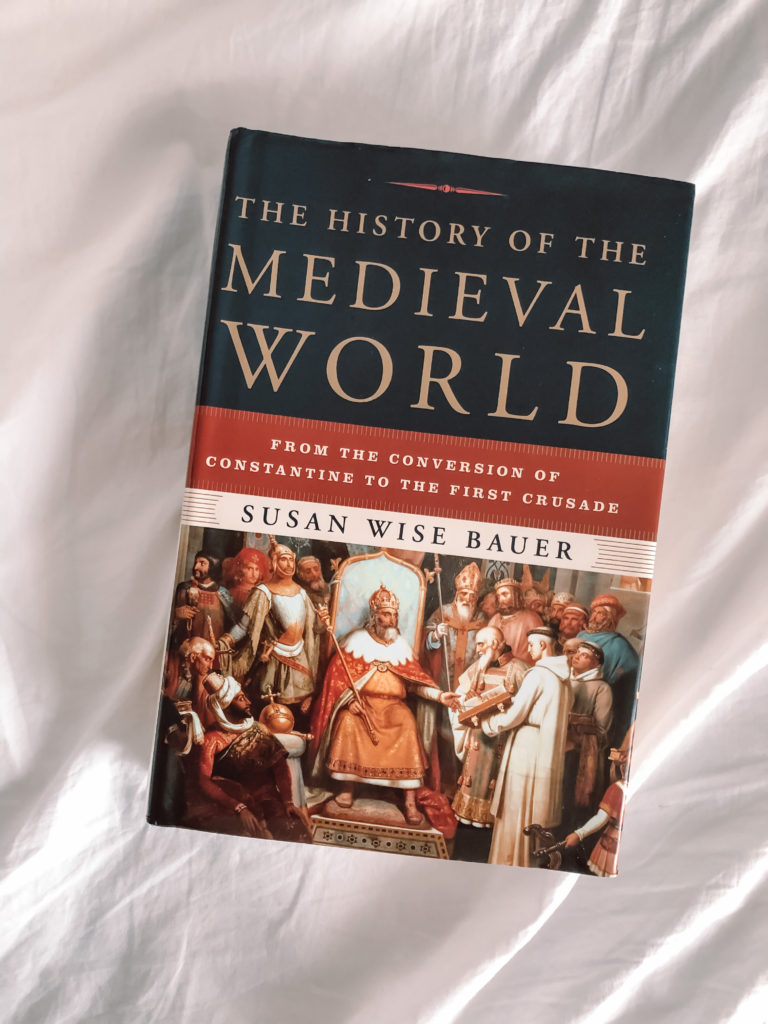
Many homeschoolers use the author’s Story of the World series as a history “spine”. The History of the Medieval World is part her history series for adults and it’s an incredibly useful and fascinating resource. I especially appreciate the way she weaves together the events taking place around the world at various times in history in a relatively fluid narrative.
I just have one quote to share from this book at the moment but it’s a great one. On Alfred’s victory over the Vikings in 878:
Alfred’s victory at Edington may have been decisive, but the Vikings had suffered greater defeats without surrender. The truth was that the Viking troops, once raiders and havoc-makers, had now been in England for almost fifteen years. They had rooted themselves into the English countryside, married Anglo-Saxon women, fathered children, planted farms, and lost a little of their piratical edge. They had begun to feel like natives, not invaders; they were ready to start new lives; and they were willing to accept the new faith if that would give them their farms and families. And Alfred’s men were no less anxious to go back to their fields, their wives, and their lives. (p.464)
The Vikings: A History by Robert Ferguson
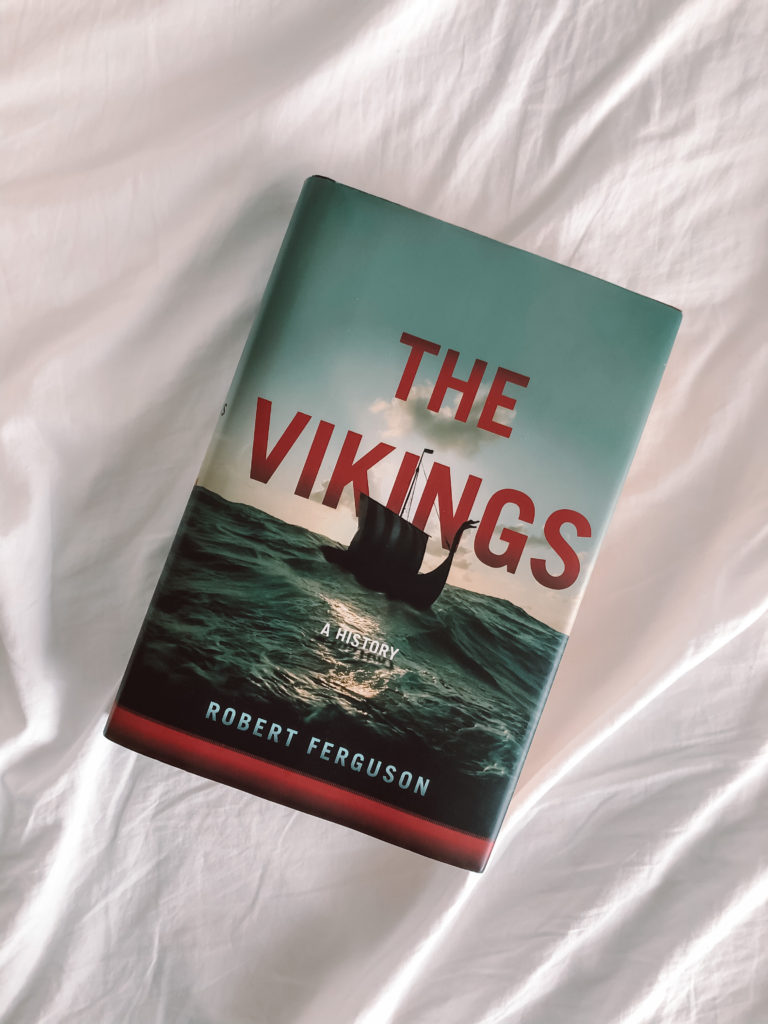
I have mostly skimmed this thick, detailed history but did appreciate his paraphrase of Ragnarok from Snorri’s The Prose Edda:
[Ragnarok] would be announced by the Fimbulvinter or ‘terrible winter’, three years of catastrophic snowfall, wind, and frost separated from each other by summers of black sunlight that brought no respite. Abandoning all hope, the inhabitants of Midgard would surrender to greed, incest and civil war. At the climax of this long and dreadful night the enemies of the Aesir, the forces of chaos which they had for so long succeeded in containing, would finally burst from their constraints: Midgardsormen, the great world-circling serpent, would come lunging out of the ocean, dragging the tides in over the land behind it and flooding the world. The giant wolf Fenrir … will break free and fulfill his destiny. The frost-giants will arrive on board a ship made from the uncut fingernails of the dead. In a last act of betrayal, Loki will be at the helm. The skies will open, and the fire-giant Surt and his hordes come flaming forth across the heavenly bridge called the Bifrost. (p.306-307)
These furious and violent forces will seek together and head for the plain called Vigrid with the single and consuming aim of wiping out the gods. Heimdall, the watchman of the Aesir, will sound a great warning blast on his horn, at which the gods and every fallen warrior whom Odin ever called to join him in Valhalla will ride to Vigrid to face them in a last great battle to preserve the world, even knowing they are predestined to fail. Odin, wearing a golden helmet and carrying his spear Gungnir, takes on the wolf Fenrir. Close beside him Thor with his hammer fights against the world-serpent. … Frey confronts Surt, Heimdall faces Loki. Thor kills the serpent but is himself mortally wounded by its venom. He staggers away nine paces, collapses, and dies. Heimdall and Loki kill each other. The wolf swallows Odin, the fire-giant Surt disposes of Frey and then fire spreads across the earth until everything is consumed and the light vanishes. (p.307)
Whew. 😅
Besides reading widely, here’s what I’m up to right now:
- Outlining ALL THE THINGS for the upcoming series. I have learned that I am write better and faster when I have a very clear mental picture of each scene.
- For this new series, I plan to outline each book in the entire series before I begin writing, so I’ll be working on that massive stack of index cards over the next several weeks. (Last time, I went book by book with the outline and spent waaaay too much time figuring out plot issues as I went.)
- Just for fun, I’m also doing covers and descriptions for each book in the series before I start writing. I’ll start sharing them on the blog at some point, probably after the first few drafts are done. (Because you just never know when a six-book fantasy series will refuse to cooperate with your detailed outlines and plans…)
Speaking of plans (I’ll never learn! buahaha), my goal is to document my experience writing and rapid-releasing this fantasy series. I’ll try to offer some behind-the-scenes snapshots as I go through the process. Look for a post soon about my new approach to outlining this time around. It’s been a lot of fun so far and I’m excited to share it with you!